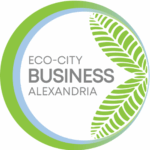What do recycling symbols mean?
When you use plastic packaging, you will find a number on it. No, it’s not the number of belly rubs we want… or is it?!
It’s actually something that is known as an SPI code – a guide to tell you what type of plastic it is and whether it is recyclable or not. Also, if the product contains the three arrows forming a triangle – the universal recycling symbol – it doesn’t mean the item can be recycled. Some items use the symbol to indicate that the product is made of recycled material. The same piece of plastic can only be recycled about 2-3 times, and then it reaches a point when it can never be reused.
Here’s our handy guide to the seven different plastics and what the symbols mean. The higher the number, the more difficult the material is to be recycled. Please remember, all plastic contains toxic chemicals that end up in our environment whether or not we recycle them. Steer clear of using plastic.
#1: PET or PETE
Polyethene terephthalate is commonly used for packaging as it is light, cheap and can be recycled. You can find it in water bottles, salad dressing, peanut butter, jam, pickles, sauce containers, and even in polyester! This plastic can leach chemicals into anything you store in it. To recycle it, give it a clean and pop it in your curbside recycling.
#2: HDPE
High-density polyethene is similar to PET. It’s commonly used in packaging and is easily recycled – but should only be used once before recycling. You can find it in juice bottles, shampoo bottles, plastic bags and plastic wrap. Bottles can be put in your curbside recycling, but bags and plastic wrap generally can’t be recycled – best to check with your local waste management team.
#3: PVC or V
Polyvinyl chloride and vinyl are tough plastics that can withstand the elements – think piping, windows and siding. These plastics typically can’t be recycled, but some plastic lumber makers may accept them. You should never burn PVC or vinyl as this can release dangerous toxins into the atmosphere.
#4: LDPE
Low-density polyethene is a flexible plastic often used to make everything from squeezy bottles to furniture! This plastic didn’t use to be recycled, but more and more places now accept it. Check with your local waste management team to see if they’ll take it.
#5: PP
Propylene has a high melting point and is used for containers that hold hot items. PP is generally accepted in curbside recycling. If it is, just give it a clean and pop it in!
#6: PS
Polystyrene is commonly used for packaging as well as disposable plates and cups. You’ll be sure to recognize it’s lumpy, bumpy texture! Polystyrene is one of the hardest plastics to recycle, and not many curbside recycling programs will accept it. If you put polystyrene in the trash, pop it in a bag before putting it in the bin to stop it from breaking up and dispersing.
#7: Miscellaneous
Got a plastic that isn’t on this list? It will fall under this number! Plastics like polycarbonate and polylactic acid come under this category. These plastics aren’t usually recycled, but check with your local waste management team.
So, there you have it! The seven different plastics that you may encounter during your day-to-day routine! They all leach toxic micro plastics into our air, food and water supply – all of which we consume! Our advice… avoid plastic use at all cost.

